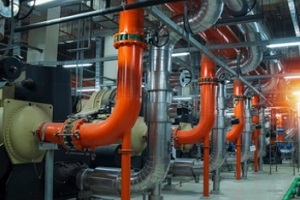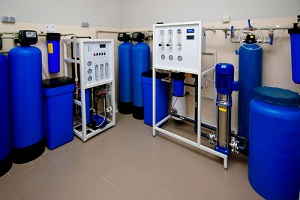 There are both chemical and non-chemical methods that can be used to treat the water used in cooling systems. Both methods are effective at keeping water systems clean, but chemical treatments can exist everywhere in the system and therefore usually protect your water better than other options.
There are both chemical and non-chemical methods that can be used to treat the water used in cooling systems. Both methods are effective at keeping water systems clean, but chemical treatments can exist everywhere in the system and therefore usually protect your water better than other options.
That being said, non-chemical options are still viable and can provide a more sustainable, eco-friendly option for cooling tower water treatment.
What is Non-Chemical Water Treatment
Non-chemical water treatment options are treatment methods that are free of chemicals. They use alternative methods designed to replace the need for caustic chemicals that many cooling towers would otherwise depend on to keep their water quality up to par. These non-chemical methods are growing in popularity due to their sustainability and more natural approach to water treatment.
Non-chemical water treatment has a variety of benefits:
Pollution Prevention
The reason why non-chemical water treatments have increased in popularity is because many of the main chemicals used to treat water are now banned in almost half of all U.S. states. Banned chemicals include chromate, molybdate, chlorine, phosphates and a variety of bromine compounds. Non-chemical methods minimize the prevalence of chemicals and provide a safer, cleaner and more sustainable option.
Cost Efficiency
If these new approaches can be developed to equal the results of chemical water treatment, the reduction in the cost of chemicals and waste can save businesses a ton of money. These options help to minimize the need for repeated treatments and lead to greater usage efficiency as well as cleaning costs.
Versatility
The use of non-chemical options can be applied to all condenser and water tower cooling systems. Non-chemical options can be used with a variety of use cases in order to provide professionally treated water without the need for caustic and harmful chemicals.
How To Treat Cooling Tower Water Without Chemicals
 Cooling tower water sources can be cleaned and treated with both chemical and non-chemical approaches. While chemical approaches are proven and effective, non-chemical treatment methods can still be successful options. Some of the leading non-chemical techniques include:
Cooling tower water sources can be cleaned and treated with both chemical and non-chemical approaches. While chemical approaches are proven and effective, non-chemical treatment methods can still be successful options. Some of the leading non-chemical techniques include:
Magnetic Fields
Magnetic field technology has been promoted since the early 1900s. Recently, the development of magnetic field technology for water cleaning has been proposed as an alternative to water hardness reduction techniques that use chemicals.
Contact The Water Treatment Pros
To learn more about Tower Water's services reach out today!
While the science of the magnetic approach can be rather dense, in essence it relies on the physical principles of the relationship between ions and a magnetic field, which can create insoluble compounds. The magnetic field approach is beneficial for a wide variety of water treatment techniques and is great for removing buildup.
Electric Field
Electric field water treatment protocols involve passing water through an EMF in order to rid the water of bacteria. The theory behind this is that the EMF waves are able to disrupt the cell membranes of the bacteria in the water, which kills the bacteria and cleans the water. EMF technology is still in development and has the potential to provide a sustainable and safe alternative to chemical methods.
Ultraviolet
Ultraviolet is a powerful technique for removing microbial contamination in water. While UV is efficient, it is a process that requires the proper amount of UV exposure in order to function. The UV approach is not only more accepted, but also better recognized as safer and more cost-effective than many chemical methods. This form of water treatment works by using UV rays to break up the DNA of bacteria and film-causing agents. This kills them and prevents future bacterial growth.
Ozone
 Ozone is a newer, innovative approach to water treatment that uses ozone (an oxidizing agent) to prevent bacteria build-up. It also functions as a descaling agent. Ozone water treatment begins with the creation of ozone in a generator within the treatment system.
Ozone is a newer, innovative approach to water treatment that uses ozone (an oxidizing agent) to prevent bacteria build-up. It also functions as a descaling agent. Ozone water treatment begins with the creation of ozone in a generator within the treatment system.
The ozone is then injected into the water where it begins eliminating bacteria and contaminants that include metals, viruses, bacteria, and even algae. Ozone has the additional capability of oxidizing iron, copper and manganese into easily filtered particles.
The Truth Behind Non-Chemical Water Treatment
While each of these techniques come with their own unique, eco-friendly benefits, the technology of non-chemical water treatment has not yet reached the efficiency levels of traditional chemical methods. However, treatments such as ozone and UV treatment are gaining more and more evidence for their efficacy of treatment.
Both chemical and non-chemical water treatment options can be used to minimize build-up and maximize efficiency. Chemical methods provide a more thorough protection, with the only drawback being the eco-friendly and sustainability factors. This is the main reason why non-chemical options continue to be explored.
For more information on chemical vs non-chemical water treatment options, reach out to our team of water treatment experts today at Tower Water.
